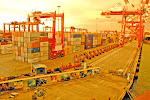Mexican shakes up world rich list
Mexican telecom giant Carlos Slim has topped Forbes magazine's billionaire's list - the first time since 1994 that an American has not led the rankings.
Mr Slim's fortune rose by $18.5bn (£12.4bn) last year to $53.5bn.
That beat Microsoft founder Bill Gates ($53bn) into second place, with US investor Warren Buffett ($43bn) third.
In 2009 332 names left the list after a tough year, but the total number of billionaires on this year's list rose from 793 to 1,011, Forbes said.
'Dominating businesses'
A spokesman for Carlos Slim refused to confirm the Forbes estimate of the Mexican tycoon's wealth, saying they did not "waste their time" on such calculations, but he welcomed the result.
"We're pleased that he has been considered the best businessman of the world," spokesman Arturo Elias told the BBC. "It means there is trust among the investors."
Forbes magazine's chief executive Steve Forbes told the BBC that Mr Slim had been slowly climbing the rich list for a number of years.
"He has been dominating businesses in Mexico, and businesses in the US as well," Mr Forbes said.
"He foresaw the rise in telecommunications, particularly cell phones. And he is also big in cement."
The year's biggest gainer, Brazilian mining tycoon Eike Batista, broke into the top 10 for the first time.
He came in at number seven, having boosted his wealth by $19.5bn to $27bn.
France's Bernard Arnault ($27.5bn), the man behind the world's biggest luxury goods firm LVMH, also moved back into the top 10, increasing his fortune by $11bn to $27.5bn.
Their mounting wealth helped to push Ikea's Ingvar Kamprad and Theo Albrecht - one of the men behind Aldi - out of the top 10.
Asian rise
One of the most notable aspects of the Forbes list in recent years has been the growth in Indian and Chinese billionaires, as the economies of the two countries have grown strongly.
CARLOS SLIM
· Full name - Carlos Slim Helu
· Age - 70
· Widower with six children
· Family empire now controls more than 200 companies
· Controls more than 90% of Mexico's phone landlines
· Other interests include Inbursa financial group and the Grupo Carso industrial conglomerate
This year there are 41 Indian billionaires, and 60 from China.
The richest Indian is Mukesh Ambani in fourth place. Worth an estimated $29bn, he owns Reliance Industries, India's largest company. Its business interests range from oil and gas, to food and clothing.
China's wealthiest billionaire - excluding those based in the Hong Kong special administrative region - is Zong Qinghou.
In 103rd place on the list, Mr Zong is worth an estimated $7bn. He owns Hangzhou Wahaha, China's largest soft drinks company.
Upturn
In a sign that the global economy could be improving, the average net worth of the world's billionaires is now $3.5bn, up $500m from last year.
Furthermore, 97 names made their debut while a record 164 returned to the list in 2010 - including Facebook founder Mark Zuckerberg ($4bn), who, aged 25, also regained the title of youngest billionaire.
The news was a far cry from 2009 when the financial crisis took its toll on the world's richest people, wiping 332 names off the list and an average of 23% off the wealth of the remaining billionaires.
Falling stock markets and collapsing commodity prices were blamed. Russia's ultra-rich appear to have recovered from last year's commodity-related losses, however, with 62 billionaires on the 2010 list, compared with 27 last year.
Consumer focus
In Europe, shopping dominated the money list with six of the top 10 European billionaires making their money in retail and three more in consumer products.
Top of the list was Bernard Arnault (7) from LVMH, closely followed by Amancio Ortego of clothes retailer Zara (9), Karl Albrecht of cut-price supermarket Aldi (10), Igvar Kamprad and family (11) of Ikea and Stefan Persson (13) of discount retailer Hennes & Mauritz.
In the UK, the sixth Duke of Westminster Gerald Grosvenor (45) remained the wealthiest Briton with a net worth of $12bn as he improved his finances by $1bn despite the UK property slump.
Meanwhile, two Britons also made their debut - real estate investor Xiuli Hawken ($2.4bn) and hedge fund manager Alan Howard ($1.8bn).
On the up
The improving health of the global economy meant that 55 countries were represented in the Forbes list - with Pakistan (Mian Muhammad Mansha, number 937) and Finland (Antti Herlin, number 773) adding their first billionaires.
Strengthening stock markets and several large public offerings during the past year helped Asia close the gap with Europe.
A total of 234 Asian billionaires were featured in the 2010 list compared with 248 from Europe.
Russia's reversal of fortunes in the past 12 months also helped Moscow to inch up the league of cities that are home to the most billionaires after it slipped to third place last year.
In 2010, New York remained at the top of the pile with 60 ultra-rich residents, Moscow was second with 50 billionaires and London third with 32.
Story from BBC NEWS:




carlos-slim-helu+(1).jpg)
.jpg)
